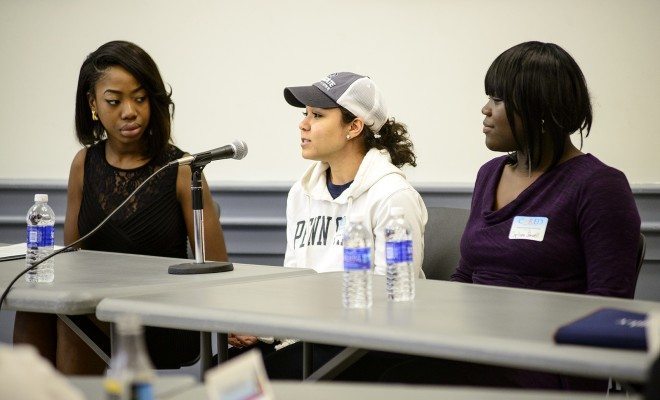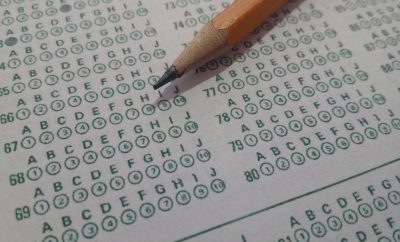 image courtesy of [Penn State via Flickr]
image courtesy of [Penn State via Flickr]
Society and Culture
In the Law School Classroom, Color Counts
The topic of diversity in law schools is one that I have a vested interest in. I’m a Black male. I went to what, in my opinion, was an excellent law school in the District of Columbia. My law school was one of the “better” ones when it came to both racial and gender diversity: more women than men and more Latino students than even Black students. I don’t think I ever felt isolated. I certainly never felt my views were discounted or presupposed to be a certain way based on my race. However, I also recognize that my experience in law school may have been unique in many regards.
Far too often, minorities in law school do feel isolated. The comments of their classmates often betray the sheltered upbringing they have had when it comes to issues of race or gender and the law. One’s experiences shade what one considers reasonable, or appropriate, or even fair. I think the most eloquent expression of what many minorities face in law school came in the form of a video produced by law students at UCLA. Take a look:
The discussion about diversity in law school is often seen through the lens of statistics — minority applicant numbers, average LSAT scores, yield rates, and so on. But what that video beautifully illustrates is the human perspective behind the debate. Through first-hand testimonials, it shows just how striking the effect of underrepresentation can be on the student. Yet many still ask: “Why should there be more minorities in law schools?” “If there aren’t more,” they say, “there must not be many qualified applicants applying.” But even this notion fundamentally misunderstands the call for greater minority representation in law schools and the legal community.
While I’ve noted that diversity in law classrooms should be more than about sheer numbers, numbers certainly help inform the debate. So a certain amount of counting must be done to set the stage for the analysis.
In fall 2010, when a young Dominic began law school in the nation’s capital, the Law School Admissions Council reports that 60,400 individuals were admitted to law schools across the country. Of those admitted applicants, a scant 4,680 self-identified as African American. I’m not so good at math [that’s why I chose the law] but the calculator app on my iPhone says that’s around 8 percent of admitted students. Some might say that is pretty good, but let’s drill down and take things school by school.
According to the most recent data provided to the American Bar Association, Harvard Law School reports that 8.9 percent of its JD enrollment identify as African American and 8.8 percent as Hispanic. At Columbia University, 7.1 percent identify as African American and 7.4 percent as Hispanic. Moving over to the west coast, Berkeley School of Law reports that a mere 3.9 percent of its JD enrollment identify as African American.That’s 33 individuals out of about 900 total. At the University of Michigan Law School, only 36 of 1,124 students identify as African American. The University of Chicago Law School: 38 of 610. Without belaboring the point, from these numbers it is quite easy to see how these students might yearn for more diversity in their 1L classes.
What becomes problematic for the minorities pursuing their legal education are the responses they often receive from peers and commentators in the media. Much of the response to the UCLA law students was centered on the theme of “you-should-have-known-what-you-were-getting-into.” Because putting the onus on the student for the amazing lack of diversity is sooooo the right thing to do.
The personal reasons a student of color might want diversity in the classroom are adequately portrayed in the video. From a macro perspective, the nation’s premier law schools feed into the nations’ premier law firms and the halls of government. From my humble perspective, it only makes sense that as our country becomes more diverse, the people who largely write our nation’s laws and set the national debate at the highest levels should reflect that very same increase in diversity. Not for selfish reasons, or from some sense of racial entitlement, but rather from a pragmatic perspective.
Without a doubt some law schools are trying, but in today’s competitive law school market, where spaces at premier schools are finite and legal jobs even more so [I’m pretty sure something is either finite or it isn’t, but whatever], law schools are struggling to keep standards high. Often this means sacrificing other metrics that might enliven the discourse in the classroom. Racial identity and socioeconomic status are eschewed in favor of median GPAs and LSAT scores — each student boiled down to what US News says a law school should value rather than recognizing the unique contribution minority students can bring to classrooms.
Alas, it seems minority students at law schools around the country may continue to feel like they have to be the lone voice for their race in a world that has not had to listen to their perspective very much before. Studying the law is an endeavor that should lead to cross-cultural communication. I always felt law school should be more than just learning the black letter, but asking why the law is as it is. Whom does the law serve? Whom does the law benefit? Without a vibrant and active minority opinion present to challenge assumptions, browner voices are often drowned out or discounted. What we don’t want is for law schools to become increasingly more homogeneous with the same views reifying institutions that have always existed to serve the majority.
Maybe more students at more law schools should make more videos.








Comments